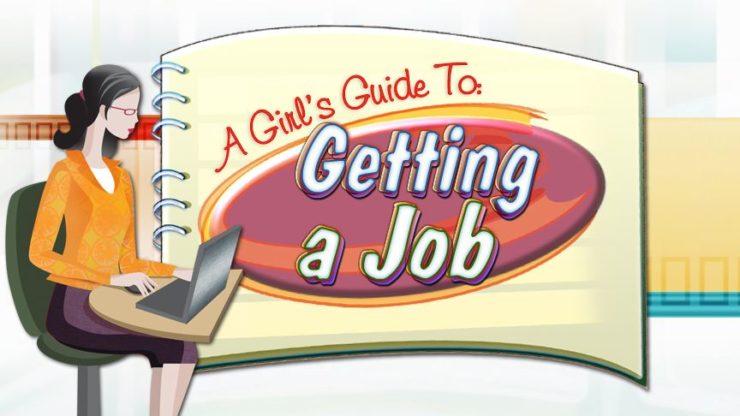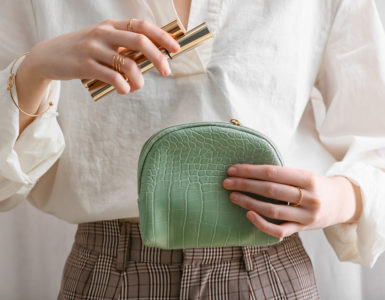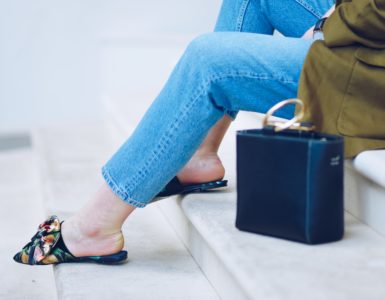Holly Stone reveals how interview attire has changed – and why that black suit just doesn’t cut it.
Image communicates without words. The image of an employee often can be associated with the image of the company, thus employees are a large part of a company’s brand. Companies spend thousands of dollars creating and protecting their brand. To make a good first impression, your image should “communicate” that yourskills will benefit the company goals. Here are some tips to creating a great first impression AND giving you added confidence during your interview.
1. Know the environment of the office or department/position.
Let’s be real. Different types of jobs as well as different Industries require varying dress codes. If you are in sales or applying for an executive position, there is an expectation for a more formal dress code. Yet, you aren’t going to wear a suit or skirt every day to an IT job or warehouse, unless perhaps you are the boss. However, even if the job you are applying for is business casual, dressing professionally to a first interview is highly recommended. It is always better to error on the side of dressing too formal than to error by appearing too casual.
From design and color to fabric and texture, all elements of professional wardrobe will communicate a message. Here is a simplified 3 tier scale of business dressing for women that ranges from formal to less formal- yet allstill considered “business professional”.
• Formal professional:Matchingpant or skirt suit in heavier fabric (depending on season, wool or cotton blend). Keep in mind, a pantsuit is more masculine; a skirt suit is more feminine. Stick to neutral colors. Custom tailored to fit your figure. Button down collared blouse in cotton or silk. Closed-toe leather shoe.
• Semi-formal professional:Coordinated suit jackets with pants/skirts-no side pockets, Neutral colors. Brighter colored blouse or shirt. Closed-toe fabric or leather shoe.
• Less Formal Professional: Sweater sets with skirts/pants-no side pockets (not either a cardigan or a sweater but a cardigan and matching sweater shirt or cami). Brighter or neutral colors. Blouses in silk, cotton or blends. Closed-toe fabric or leather shoe.
2. Nylons with skirts ARE NOT optional.
Bare legs are not appropriate for most corporate offices. Make sure nylons are either slightly darker than your own skin tone (nothing too “tan/orange” looking), or match the color of your shoes.
3. Avoid wearing black.
I can hear the ??WHAT?? already. Yes, I said it. Avoid wearing black. For these reasons:Everyone wears black. You are NOT everyone. You are special, unique and someone that should be hired. Step outside of the expected and opt for Charcoal, Grey, Navy, Chocolate or other neutral colors. This will automatically set you apart from mainstream.
Black is easy. It doesn’t take much creativity to create a black combination. Show your ability to think outside the box by wearing a color combination that requires a little thought, effort and preparation.
Black can be intimidating. Black is a “power” color and can be too overpowering if not worn correctly. Visual communication is important during an interview. Wearing a creative color as described above may put your interviewer more at ease.
4. Keep it solid.
Solid colors for blouses, shirts or sweaters. Printed or patterned shirtsare considered more casual. Instead, opt for a naturally occurring texture such as tweed in your skirt or pants.
Additional tips:
1. Do a sit test in your skirt. If you are uncomfortable with the length and have to hold it in place or tug to get it comfortable, it is too short.
2. Carry a smaller handbag. Streamline your “mom bag” and coordinate with your interview attire
3. Bring an extra pair of nylons. Just in case the unexpected happens
4. Polish shoes
5. Minimal jewelry and make-up so YOU are heard-not your accessories
6. Insert your personal flair- a scarf, a brooch, or a favorite color
7. Iron, iron, iron
8. Check all hems and clip any stray strings
9. Don’t forget your SMILE!!!!

Holly Stone is no stranger to business and the beauty industry. Starting as a model at the age of 14 she decided that she preferred to be behind the scenes rather than in front of the camera. She choreographed fashion shows, selected models for events and assisted her agency with make-up.
Her skill for make-up artistry quickly became recognized and the demand for her talent launched a career that would take her all over the country. She received a bachelor’s degree, and took a position as VP of Merchandising for Overstock.com. There she learned the business skills of resourcing, buying, marketing, and negotiating. She moved on to train in Los Angeles at AWARD, a leading make-up artist school in the west.
Today, with her business skills and her passion for the art of make-up, she manages a successful career as an educator and a veteran make-up artist of 16 years. She works in various media with actors/actresses, models, brides, and photographers. She is a consultant to several cosmetic distributors, spas, and salons where she teaches application and technique. She is a nationally recognized educator of cosmetic application and is a personal image consultant to people ranging from high position corporate figures to the everyday woman.
Holly is the owner of Re-Creation Studio, School of Media Make-up Artistry. For information about her classes, visit www.learntodomakeup.com.















Add comment